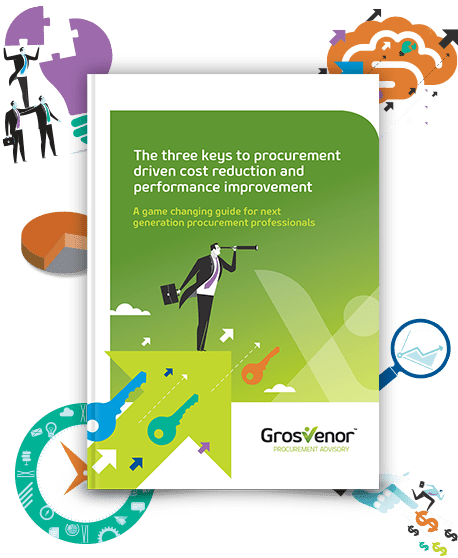How is service sourcing different from product sourcing?

Sourcing goods and services
“Unfortunately, the tried and true rules for buying goods do not work when applied to the buying of professional services” (Wittreich, 1966)
Services have become a significant part of Australia’s economy. However, businesses are not always sure how to align their purchasing function with this trend. This whitepaper explores differences between physical goods and services and how these influence the procurement function.
In 1776 Adam Smith considered services to be unproductive and not adding wealth to a nation. In 2010, services contributed 72 per cent of Australia’s GDP. Having focussed on the production of physical goods for centuries, the business world, much like economists, struggles with adapting their processes to the growing prevalence and importance of services.
Sourcing objectives for physical goods are straightforward: ensure that the goods arrive at the right time, at the right place, in the right quantity and that they are of the right type and quality for the lowest possible cost. The relationship between supplier and customer may conclude when these objectives are met. In contrast, agreeing to the delivery of a service is only the beginning of the relationship between client and service provider.
This whitepaper aims to demonstrate the differences between goods and services. It will outline how these differences impact the procurement function and how they can be managed.
How services are different
When looking at differences between goods and services, it helps to divide the production process into three stages: the input stage, the transformation stage and the output stage.
The input stage takes place before a purchasing contract is signed. During this stage the producer of a good combines labour, materials, machines, buildings and patents to create a product offering for the market. The customer can inspect the tangible product and, for example, test its durability. At the end of this stage, both parties know exactly what to expect from the transaction.
Because a service offering is intangible, this task is more complex when sourcing a service. The service provider simply cannot offer the client something to “touch” or put through a quality check. Some challenges that may be faced are:
- The provider may have limited information about what the client desires. The client may not understand their processes enough to specify their needs, or may not understand what information is relevant. As a result, both parties spend a lot of time specifying their understanding of the service provision.
- The provider struggles with putting a price on the service offering. It may be difficult to judge what additional work the client will request and what contributions the client is committed to make during service provision.
- High uncertainty also remains on the client side. The client may not be able to correctly assess the service provider’s capabilities or intentions to actually dedicate the promised time. Assurance of capabilities and motivation is important, since the client might not be able to change the provider later on.
- It will be difficult for the client to compare offers from different providers, because their services might differ in more aspects than just physical goods. This would be especially apparent when sourcing commodities such as fuel or steel.
At the end of this stage, a service contract will be agreed to. However, even though a lot of time may have been spent to prepare it, the remaining uncertainties mean that the contract is incomplete to a certain degree.
The transformation stage combines the several inputs into one output. In the case of goods production, this is a qualitative transformation that is controlled entirely by the producer without further customer involvement. Depending on the product, it may be produced in high volumes, at a high rate of standardisation, with highly specialised equipment and labour, utilising economies of scale. Any fluctuation in demand may be neutralised by increasing or decreasing stock.
The transformation stage for services is quite different, since it requires the presence of an external factor. An external factor may be a person or an object that is not controlled by the provider. For example, a car that is brought in for repair is an external factor, as is a person in the dentist’s chair. It is important to keep in mind that the requested service can only be performed if the relevant external factor is present during the transformation stage. This implies that:
- services cannot be produced to stock (think of a taxi driver who can only perform their service when a passenger is in the car)
- service delivery might be bound to a certain location
- workforce capacity planning is a challenge (for instance, a retail assistant waiting for clients); if the provider plans too little capacity, the quality of the service can’t be guaranteed and waiting times may occur. If the provider plans too much capacity, productivity will decrease and the provider may be forced to discount prices to counteract.
- including an external factor hinders standardisation, since every customer will influence the service process in an unique way
- dividing the service delivery into specialised stages is problematic, since for some services, the transfer of knowledge between employees is impossible or too time-intensive (it takes years to become a dentist)
- customers gain insight into the service delivery process and may perform it themselves one day, becoming competitors
- the necessity of an external factor creates the opportunity to shift some service delivery tasks from the provider to the client, which may reduce the provider’s cost (think of reduced staff in supermarkets because of self-checkouts, the change that IKEA brought to the furniture industry or customers filling-in forms that previously were populated by staff in a service centre).
In the output stage, the buyer of a physical good can quite objectively assess if the delivered product has the agreed upon characteristics. If the product does not suit the needs, the customer can return it to the producer or sell it to a third party. Once again, this does not apply to services, since the output of a service is intangible. This leads to the following problems:
- objective quality assessment is difficult in the absence of a physical object
- benefits of the service partially occur during the delivery of the service, leaving no option for returns after service completion
- if the client is unhappy with the service delivery they will need to convince the provider to re-deliver all or part of the service
- the point in time when the service was completely delivered may be unclear and may differ based on the client’s and service provider’s understanding of the service contract
- if a lot of time had been dedicated to negotiating almost complete contracts in the input stage, the parties can refer to the contract for resolving issues with the service output. If not, the lack of clarity may cause deviating views which will have severe implications for the client-provider relationship.
Implications for sourcing of services
The following will discuss how the outlined differences between products and services affect the sourcing of services and also how the resulting challenges can be addressed.
Managing uncertainties
Image and reputation are the service provider’s most useful resources when managing uncertainties. The service provider may be judged on the basis of their past performance and customer referrals. This is because they may be the only sources available to a client when predicting the provider’s qualification, quality of work and likelihood of success.
If uncertainties are managed proactively and effectively, the client will trust the provider and be more willing to enter into long-term contracts which guarantee ongoing business. The client’s loyalty will become an entry barrier for competitors.
To manage uncertainties, the client needs to have a detailed understanding of the desired service outcomes. This is especially true for Business Process Outsourcing. Often a client seeks outsourcing of a process that was not successfully provided in-house, because the client did not understand the complexity of the process. Outsourcing agreements, based on the hope that the service provider will figure out what the problem is, are bound to fail. Having an exact understanding of what is needed creates three advantages:
- a client will only be able to draft a contract that is sufficiently detailed to ensure successful service delivery if they understand all aspects of the process
- the client will have a sound understanding of what their responsibility will be and what parts of the process are to be performed by the service provider
- the client will have enough knowledge to test the service provider’s capabilities. This step is sometimes referred to as due diligence and involves asking clarifying questions, interviewing key stakeholders, verifying external references or setting up demonstrations (for example when buying software). Spending time on due diligence as well as creating explicit and concise contracts will provide dividends during and after the service delivery.
Managing knowledge
Services require the active management of knowledge. The service provider will need to access the client’s explicit knowledge, such as documents, policies and process descriptions; however, will also rely on the provision of tacit knowledge that is embedded in the client’s employees. The client needs to make sure that as little tacit knowledge as possible is required and that it is accessible whenever it is needed.
This means keeping documentation up to date, granting the provider access to it and ensuring employees have time to work with the service provider.
The management of knowledge is a two-way-street. Since the client is directly involved in the production of the service, they can learn from the service provider’s expertise. This will become very useful when the contract is up for renewal, since it puts the client in a position to negotiate more complete contracts and compare the offers of different providers. Being involved in the production of a service comes with another advantage: the client can identify problems as they arise, not just after the completion of production. The client can then help the provider to fix these issues before they become significant problems or impact negatively on service delivery.
Managing complexity
The procurement function is also focused on the management of complexity. The buyer of a good faces little complexity as they do not need to understand how a product is produced in order to use it (think of a car). For the producer of a good, the logistics of production and distribution may be quite complex.
Managing intangible inputs and outputs and the presence of an external factor in the transformation stage over a long period of time, adds great complexity for a service provider. The fact that production and consumption of a service occur at the same time adds to this complexity and implies that the service provider:
- requires thorough capacity planning
- needs diligent project management
- does not have to deal with products in stock allowing them to become a lean organisation rather quickly, lowering cost and increasing agility
For the client buying a service, complexity is also high. The client will be heavily involved in the service delivery and therefore cannot distance themselves from the production process.
When procuring a service, a good practice to reduce complexity is to break the service offering down into stages. After the completion of every stage, the client and provider jointly assess the results before moving on to the next project phase. Not only does this reduce complexity in the service delivery process, it also makes the description of the service and the contract negotiations easier.
Managing relationships
A fourth important area to focus on is relationship management. Provider and client will work together for an extended period of time and they are heavily dependent on each other for creating a successful service delivery. This implies that working mechanisms for conflict resolution and project management are paramount. The intangible nature of the service result underlines this importance, since the changes made to the external factor may not be reversible (think of a haircut).
Four things to keep in mind when sourcing services
When sourcing services, the procurement function becomes a strategic management process that is long-term oriented and concerned with managing uncertainties, knowledge, complexity and relationships before, during and after the service delivery.
In comparison to buying products, the procurement function becomes less about comparing a plethora of suppliers, assessing quality levels, finding the lowest prices, determining the right quantities or managing the logistics of getting the supplies to the right place at the right time for one-off transactions.
When putting together a procurement process for a service, be sure to:
- manage uncertainties
- manage knowledge
- manage complexity
- manage relationships
Conclusion
This paper discussed how the differences between products and services affect the procurement function.
Grosvenor Performance Group has processes in place to ensure that your procurement approach for services is distinctively different from the sourcing of physical products by managing uncertainties, knowledge, complexity and relationships.








